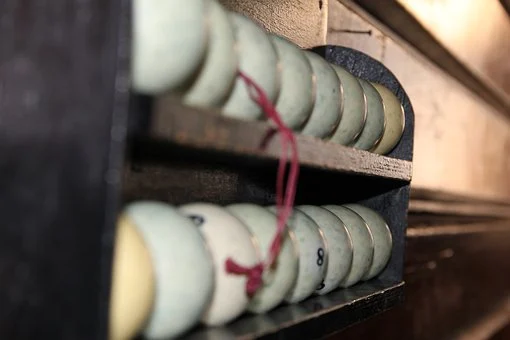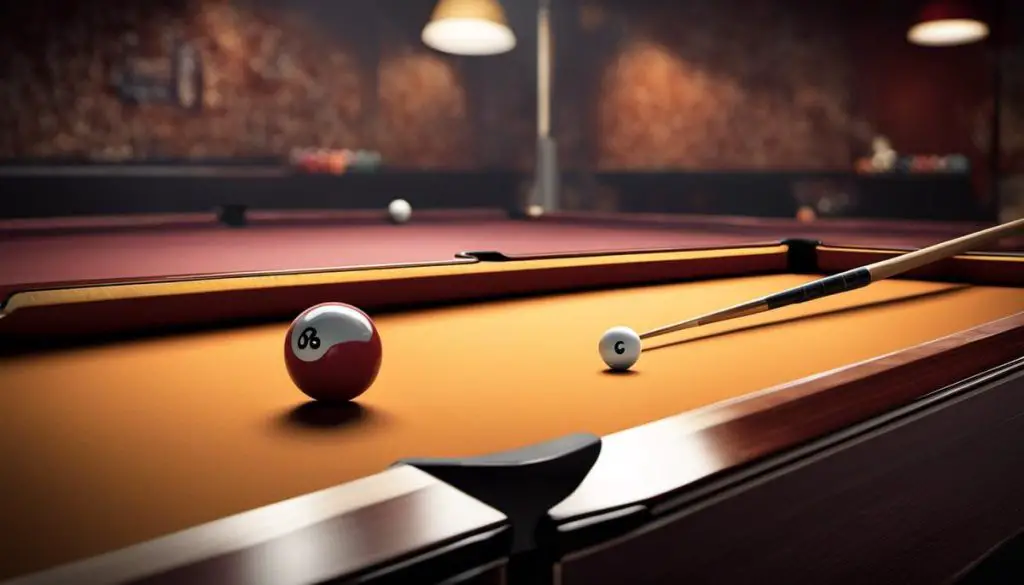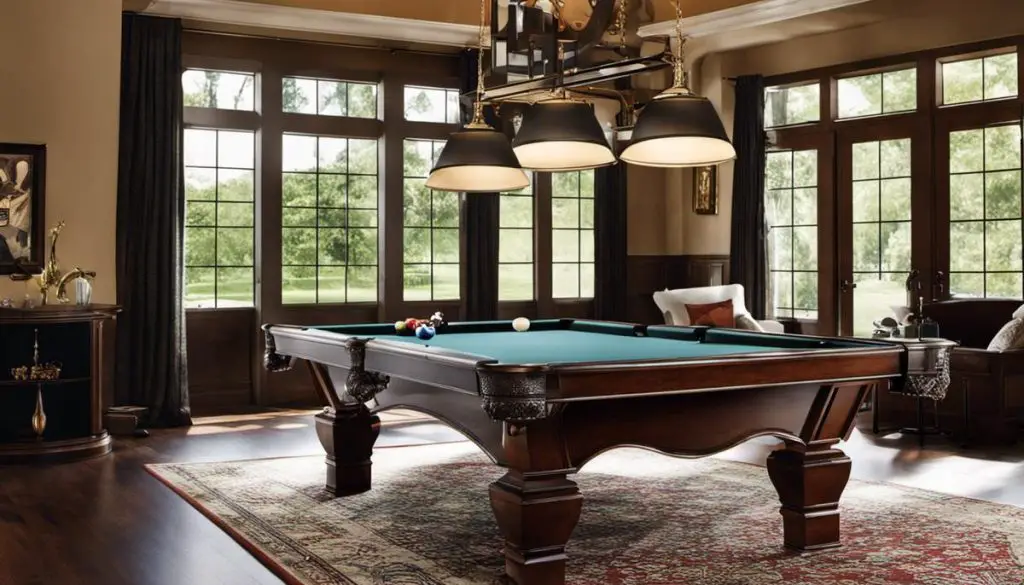When it comes to choosing a pool cue, the first two considerations that are top-of-mind are usually price and material. Another factor that’s hugely important in influencing your game is the type of cue you choose. What are the different pool cue types?
You can choose from one of four different types of pool cues:
- Ramin cues
- American cues
- English cues
- Snooker cues
What’s the difference between an American and English pool cue? Which of these four cue types comes most recommended for beginner or intermediate players? We’ll answer all those questions and more ahead, so make sure you keep reading!
The Types of Cues in Pool
This is something we only just touched on in our most recent blog post, so now we’re excited to delve into the differences between ramin, American, English, and snooker pool cues!
Ramin Pool Cues
No, not ramen like ramen noodles, but ramin pool cues. Of the four types of cues, we’d say these are not that super high on the popularity list. Even still, all pool players are at least partially familiar with ramin cues, as these are the pool cues you tend to come across when you go to your local bar or billiards hall to shoot some pool casually with your friends.
Do you own a pool table for playing at home? If you bought one and it came with a cue, that’s likely a ramin pool cue. As you could have guessed, ramin cues are inexpensive to produce, which is why they’re used in the above applications.
A single-piece pool cue, ramin cues can shoot a cue ball, but not with the best precision or accuracy. Making matters worse is that the ferrule isn’t glued into place. If you need a reminder, the ferrule is the part of the pool cue that’s right under the tip.
If the ferrule is loose or can become that way, this is going to impact how you play by a significant margin. Since the ferrule is supposed to act as a shock absorber, if it’s loose, it’s not absorbing anything. You’re left feeling the aftereffects of each shot, which will impede your accuracy sooner than later.
American Pool Cues
Your second option is the American pool cue. This cue is predominantly wooden, often maple, which gives American cues a uniform look from one to another. If you see a lighter-hued cue at the store or online and it has an especially smooth finish, chances are good it’s an American pool cue.
These cues are much higher in quality than a ramin cue. For one, the ferrule is securely in place. It’s also made of plastic and is quite thick so it’s not at risk of loosening up. The superior shock absorption qualities of the plastic ferrule will improve your accuracy, especially over playing pool with a ramin cue.
American pool cues feature a leather tip that’s between 13 and 14 millimeters. Yes, that’s a thicker tip. If you remember in our article on the types of pool, an American pool ball is usually bigger and weighs more than other cue balls. Thus, you need a rather burly tip to strike the ball without snapping. The American pool cue is the perfect solution.
The weight of an American pool cue is anywhere from 18 to 21 ounces, which is the standard, and half-ounce weights may be available as well. The average length of these cues is 57 to 58 inches. You can buy an American pool cue as a single-piece cue or as a two-piece depending on your preferences.
English Pool Cues
Now here’s where things start to get a little confusing, as American and English pool cues share a lot of similarities. For one, English cues feature ash wood or white ash, so it’s the same light blonde color as an American pool cue. How do you tell the difference between the two cues? You have several ways.
For one, touch the pool cue. If it’s smooth, then it’s probably an American pool cue, as we talked about before. English pool cues feature a rougher texture thanks to the natural grain of ash wood.
The ferrule of an English pool cue is also smaller than those in American cues. The material of the ferrule is another differentiating factor. English pool cues feature brass ferrules rather than rubber. Brass reinforces the cue overall so it’s stronger.
Both American and English pool cues feature leather tips, but with several key differences. With an English cue, the tip is coarser to improve your grip. You can also compare tip sizes to easily tell these two types of cues apart. Since English pool balls aren’t as weighty as American pool balls, the tip of an English cue will be a lot smaller and thinner. The average size is 8 to 9 millimeters. Some cue tips are up to 9.5 inches, but that’s about the biggest they’ll go.
English pool cues are the same length as American cues, about 57 inches. Some English cues have a more sizable butt for long-range shots, which also helps you tell them apart from American pool cues.
Snooker Pool Cues
The fourth type of pool cue is a snooker cue. Now, snooker is its own game that’s separate from pool. In snooker, you still play on a billiards table, but you have to hit 21 balls with your cue ball in a specific order. Six of those pool balls are colored and the other 15 are all red.
A snooker cue is closer to an English pool cue than an American cue is, that’s for sure. Snooker cues are built from ash wood as well so they may have a similar texture. The tip of the pool cue is quite coarse as well. Some snooker cues may have brass ferrules, but stainless steel is the more common material since it’s stronger.
The leather tip is 9 to 10 millimeters, about one millimeter smaller than an English pool cue. That’s really your biggest indication that you’re using a snooker cue over an English cue or vice-versa.
Snooker cues may be ever so slightly longer than English cues, 57 to 58 inches. That size is appropriate since snooker balls are 21/16th inches whereas English pool balls are 21/4th inches.
Selecting the Right Type of Pool Cue for You
Those are the four types of pool cues, but which one should you choose the next time you’re going to play pool with your friends?
Your decision shouldn’t be a random one, that’s for certain. As you now know, the types of cues are made for different pool games except for a ramin cue, as there’s no pool game called ramin.
Yet even still, since a ramin pool cue is generally agreed upon to be cheap, you don’t want to use it in a game of American pool. The ramin cue will not be able to stand up to the heavy American pool balls and will likely snap. If you’re borrowing a cue from a billiards hall, you’d have to pay to get it replaced. Even if it’s your own cue, you’d still have to buy a new one.
Using an English pool cue to play American pool or vice-versa would be a detrimental rookie mistake. The streamlined tip of an English pool cue, like a ramin cue, is too skinny to strike American pool balls well. Your accuracy will be in the toilet and you’ll weaken your cue little by little the more you keep using it.
Playing English pool with an American pool cue won’t put the integrity of your cue at risk, but you are again going to suffer in the accuracy department. Although the leather tip of an American cue isn’t that much thicker than the tip of an English cue, the differences are enough that you’ll feel clunky with each shot you make. Your grip may also be impacted since the leather tip of your American pool cue is not coarse like an English cue is.
The only pool cues you might be able to use interchangeably is a snooker cue and an English cue. Even in that instance, we don’t recommend it. Those pool cues are not the same, and they should both be used for the respective games they’re intended for.
Conclusion
In the world of pool, you may play with a ramin cue, an American cue, an English cue, or a snooker cue at various times. These pool cues may look the same at first glance, but differences in material, weight, length, grip, and tip size make playing with one cue or another very unique experiences.
We hope this article helps you choose the right cue for your next game of pool!









